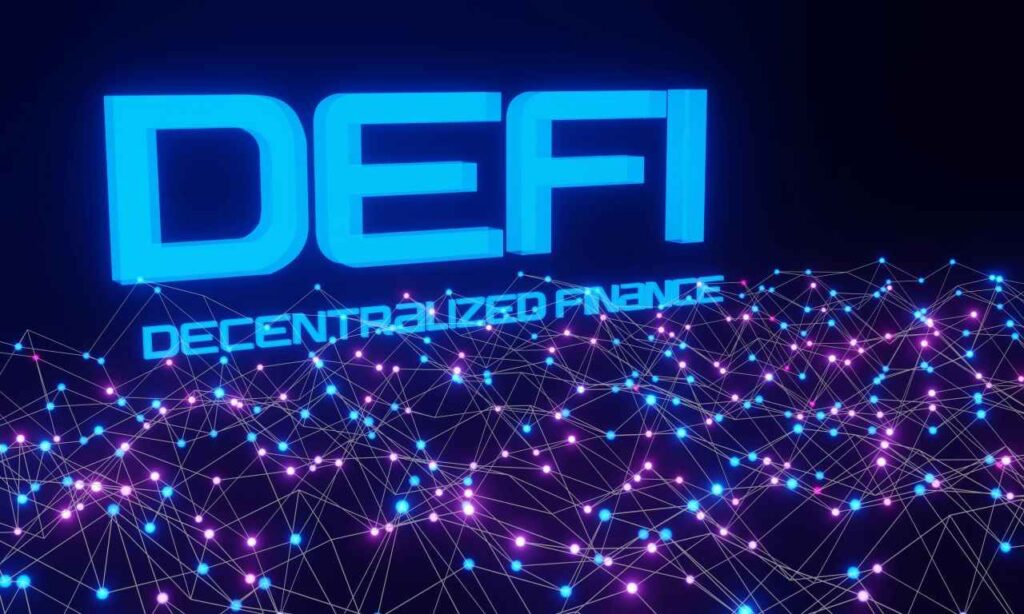Decentralized Finance (DeFi) is no longer just a buzzword; it’s a revolutionary force that is shaking up the world of traditional finance. With innovations that promise to democratize finance and make it more accessible, DeFi is rapidly evolving—introducing tools and protocols that challenge the status quo. From yield AMMs and tokenization of real-world assets (RWAs) to groundbreaking credit systems, DeFi is transforming how people trade, invest, and manage wealth. In this article, we’ll explore eight of the most exciting trends in DeFi and how they are reshaping the financial landscape.

1. Yield AMMs: The Future of Capital Efficiency
Automated Market Makers (AMMs) have long been the backbone of decentralized exchanges, allowing for permissionless trading without the need for traditional order books. But the new frontier of AMMs is here: Yield AMM protocols. These advanced protocols, such as Pendle Finance, separate an asset’s yield from its principal value. In simple terms, they allow users to trade or speculate on future yield without having to sell the underlying asset itself.

For investors, this opens up new opportunities to hedge against interest rate exposure or to trade on future returns. Imagine being able to unlock returns from a fixed-income portfolio without selling the assets that generate those returns. This groundbreaking approach to managing yield not only enhances flexibility but also optimizes capital efficiency. The result? Higher returns with less risk—a concept that was once out of reach in traditional finance.
2. Yield Aggregators & Abstraction Protocols: Making DeFi More Accessible
As DeFi matures, platforms are introducing tools that simplify the process for users—especially those who aren’t tech-savvy. Yield aggregators like Yearn Finance are automating the process of yield optimization by finding the best opportunities across various protocols. This means that users don’t have to manually manage multiple positions and risk missing out on the most profitable opportunities. Instead, they can rely on smart algorithms to make that decision for them, saving time and increasing returns.
On the flip side, abstraction protocols are helping to reduce the complexity of interacting with DeFi systems. These protocols make it easier for users to interact with DeFi platforms without needing a deep understanding of blockchain technology. Whether you’re a casual crypto user or an institution looking for a hassle-free solution, these innovations are lowering the barriers to entry, making DeFi more intuitive and accessible for everyone.
3. Derivatives DEXs with Integrated Borrow-Lend Markets: The New Era of Trading
DeFi’s trading ecosystem is evolving to include more advanced products—especially in the world of derivatives. Platforms like dYdX and Synthetix are leading the charge by integrating borrowing and lending directly into their decentralized exchanges (DEXs). This integration allows users to leverage borrowed assets for trading derivatives or to hedge against their positions. With perpetual contracts and synthetic assets available, traders can access a wide variety of assets and complex trading strategies without relying on centralized exchanges.
This shift opens up new opportunities for both retail and institutional traders. It creates a more seamless and capital-efficient trading environment, allowing for more advanced risk management techniques. As institutional interest in DeFi continues to grow, derivatives DEXs are set to play a significant role in the future of decentralized markets.
4. Flash Loan Vaults: Making Complex Strategies Simple
Flash loans are one of DeFi’s most unique and disruptive features. These uncollateralized loans allow users to borrow large sums of money for a very short time—often just a few minutes—so long as the loan is repaid within the same transaction. The next big thing in flash loans is flash loan vaults—structures that allow users to execute complex strategies like “looping” (repeated borrowing and lending) with a single click.
This innovation eliminates the need for technical expertise, making advanced financial strategies accessible to everyone. Platforms like IntoTheBlock and certain yield aggregators are already implementing these features, which can significantly enhance the effectiveness of capital deployment. As the technology matures, flash loan vaults will empower a wider range of DeFi participants, simplifying the execution of complex strategies and making advanced DeFi more approachable for everyday users.
5. Tokenization of Real-World Assets: Bridging Traditional Finance and DeFi
One of the most exciting trends in DeFi is the tokenization of real-world assets (RWAs) like real estate, commodities, and even equities. Projects such as Ondo Finance and initiatives from major players like BlackRock’s BUIDL Fund are helping to bring traditionally illiquid assets into the DeFi ecosystem. Tokenization is a game-changer because it unlocks liquidity in markets that have historically been difficult to access, such as the real estate market.
Tokenizing RWAs also provides new collateral options for DeFi loans, expanding the range of assets that can be used in decentralized finance. This trend is not only attracting individual investors but also institutional capital, as it blurs the lines between traditional finance and DeFi. By digitizing and fractionalizing RWAs, DeFi opens up entirely new investment opportunities and further bridges the gap between the crypto world and the broader economy.
6. Protocol-Based Credit Systems: Rethinking Credit Scoring
DeFi is redefining what it means to have credit. Traditional credit systems rely heavily on centralized institutions, like banks, to assess your creditworthiness. In the DeFi world, however, protocol-based credit systems are emerging, which assess creditworthiness using blockchain-native data. This can include transaction history, staking behavior, or even governance participation on DeFi platforms.
This decentralized approach to credit scoring democratizes access to capital, allowing individuals and businesses that might otherwise be overlooked by traditional financial institutions to access loans and other financial products. While no protocol has fully realized this vision yet, the infrastructure is being built, and it’s only a matter of time before DeFi fundamentally alters the way we think about credit.
7. Trade and Receivables Financing: Redefining Global Commerce
DeFi isn’t just changing how we trade digital assets; it’s also transforming how businesses access liquidity. Trade and receivables financing allows companies to tokenize invoices and use them as collateral for loans. This is especially useful in industries with long payment cycles, such as manufacturing and import/export. Goldfinch, a DeFi protocol focused on decentralized lending to real-world businesses, is a great example of how DeFi is being applied to traditional trade finance.
By providing businesses with faster access to capital, DeFi is helping to address some of the pain points in global commerce. This not only makes financing more accessible to smaller businesses but also democratizes access to trade finance, creating new liquidity channels for global trade.
8. Intellectual Property Fractionalization: Unlocking New Investment Opportunities
One of the most innovative applications of tokenization is the fractionalization of intellectual property (IP). By tokenizing patents, trademarks, and copyrights, companies can create new markets for IP-backed tokens. VitaDAO, a pioneering project in this space, is focusing on the tokenization of biomedical IP, particularly in longevity research. This approach not only opens up IP investment to a broader audience but also provides a novel way to fund important research initiatives.
Tokenizing and fractionalizing IP makes valuable assets more liquid and accessible. It allows individuals and institutions to invest in high-value intellectual property that they might otherwise not be able to access. As more projects adopt this model, it could reshape how IP is financed and traded in the future.
Final Thoughts: The Future of DeFi is Here
DeFi continues to push the boundaries of what’s possible, offering more inclusive, efficient, and innovative financial products than ever before. From yield AMMs to the tokenization of real-world assets, these emerging trends are reshaping the financial ecosystem, bridging the gap between traditional finance and decentralized finance. As DeFi matures, it will attract even more institutional involvement and expand access to financial services for individuals and businesses across the globe
The future of finance is decentralized, and the possibilities are limitless. Whether you’re an investor, a trader, or simply someone looking to explore new financial opportunities, DeFi has something for everyone. Stay ahead of the curve by embracing these trends and participating in the next wave of financial innovation.
This article is based on IntoTheBlock’s latest research paper about the future of institutional DeFi.




